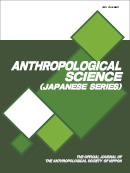Volume 119, Issue 2
Displaying 1-6 of 6 articles from this issue
- |<
- <
- 1
- >
- >|
Obituary
-
2011Volume 119Issue 2 Pages 45-48
Published: 2011
Released on J-STAGE: December 22, 2011
Download PDF (380K)
Original Articles
-
2011Volume 119Issue 2 Pages 49-74
Published: 2011
Released on J-STAGE: December 22, 2011
Advance online publication: September 10, 2011Download PDF (2828K) -
2011Volume 119Issue 2 Pages 75-89
Published: 2011
Released on J-STAGE: December 22, 2011
Advance online publication: November 22, 2011Download PDF (1401K) -
2011Volume 119Issue 2 Pages 91-124
Published: 2011
Released on J-STAGE: December 22, 2011
Advance online publication: November 22, 2011Download PDF (3153K)
Material Research Report
-
2011Volume 119Issue 2 Pages 125-136
Published: 2011
Released on J-STAGE: December 22, 2011
Advance online publication: November 22, 2011Download PDF (850K)
Symposium
-
2011Volume 119Issue 2 Pages 137-142
Published: 2011
Released on J-STAGE: December 22, 2011
Download PDF (419K)
- |<
- <
- 1
- >
- >|
